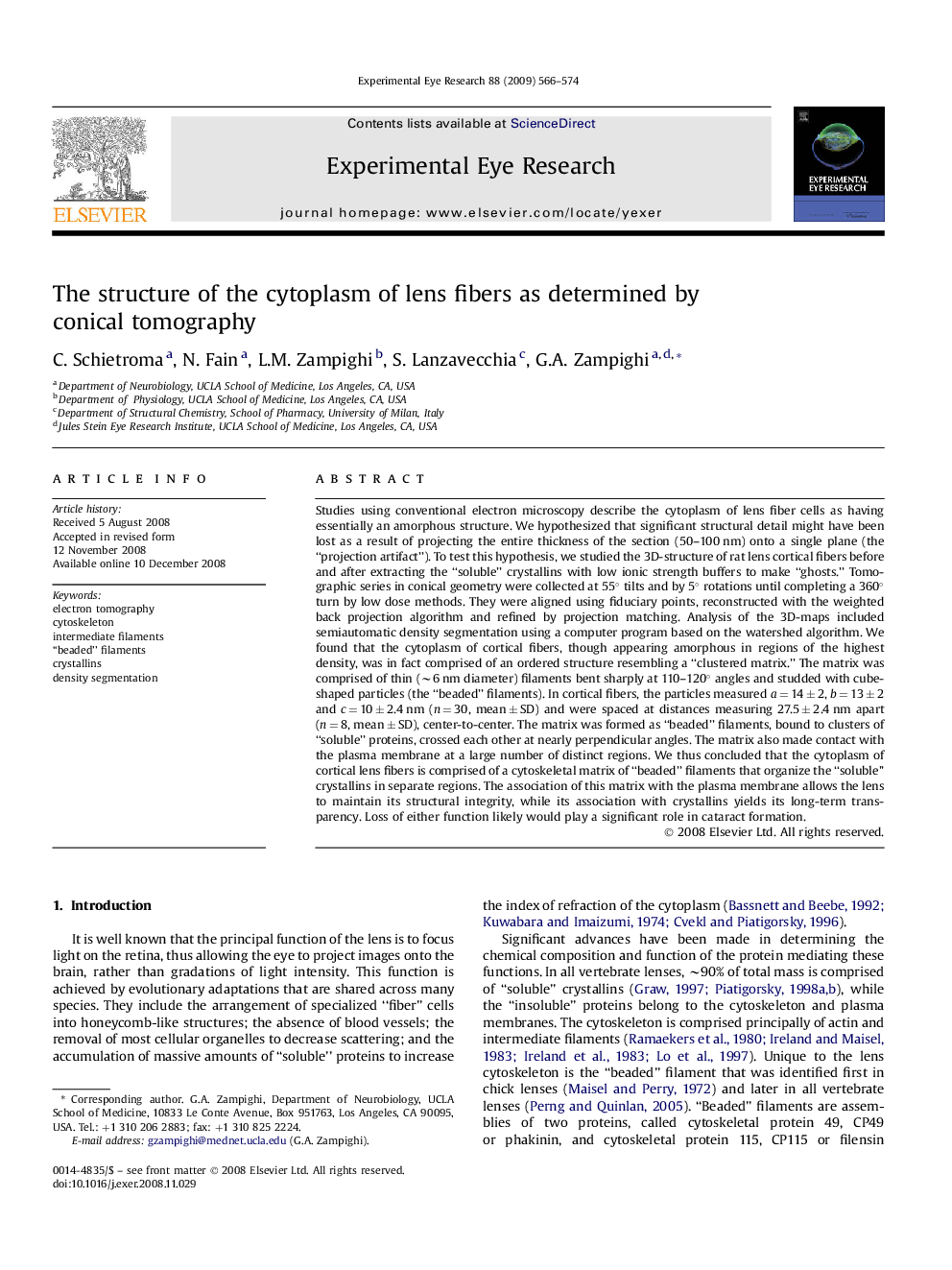| کد مقاله | کد نشریه | سال انتشار | مقاله انگلیسی | نسخه تمام متن |
|---|---|---|---|---|
| 6197561 | 1261174 | 2009 | 9 صفحه PDF | دانلود رایگان |

Studies using conventional electron microscopy describe the cytoplasm of lens fiber cells as having essentially an amorphous structure. We hypothesized that significant structural detail might have been lost as a result of projecting the entire thickness of the section (50-100 nm) onto a single plane (the “projection artifact”). To test this hypothesis, we studied the 3D-structure of rat lens cortical fibers before and after extracting the “soluble” crystallins with low ionic strength buffers to make “ghosts.” Tomographic series in conical geometry were collected at 55° tilts and by 5° rotations until completing a 360° turn by low dose methods. They were aligned using fiduciary points, reconstructed with the weighted back projection algorithm and refined by projection matching. Analysis of the 3D-maps included semiautomatic density segmentation using a computer program based on the watershed algorithm. We found that the cytoplasm of cortical fibers, though appearing amorphous in regions of the highest density, was in fact comprised of an ordered structure resembling a “clustered matrix.” The matrix was comprised of thin (â¼6 nm diameter) filaments bent sharply at 110-120° angles and studded with cube-shaped particles (the “beaded” filaments). In cortical fibers, the particles measured a = 14 ± 2, b = 13 ± 2 and c = 10 ± 2.4 nm (n = 30, mean ± SD) and were spaced at distances measuring 27.5 ± 2.4 nm apart (n = 8, mean ± SD), center-to-center. The matrix was formed as “beaded” filaments, bound to clusters of “soluble” proteins, crossed each other at nearly perpendicular angles. The matrix also made contact with the plasma membrane at a large number of distinct regions. We thus concluded that the cytoplasm of cortical lens fibers is comprised of a cytoskeletal matrix of “beaded” filaments that organize the “soluble” crystallins in separate regions. The association of this matrix with the plasma membrane allows the lens to maintain its structural integrity, while its association with crystallins yields its long-term transparency. Loss of either function likely would play a significant role in cataract formation.
Journal: Experimental Eye Research - Volume 88, Issue 3, March 2009, Pages 566-574